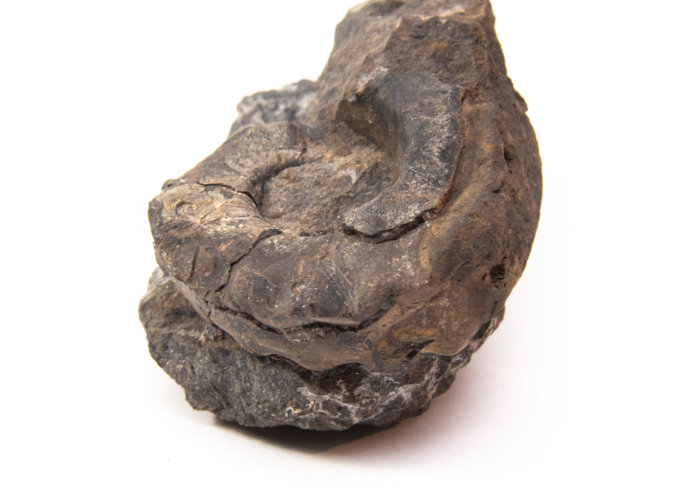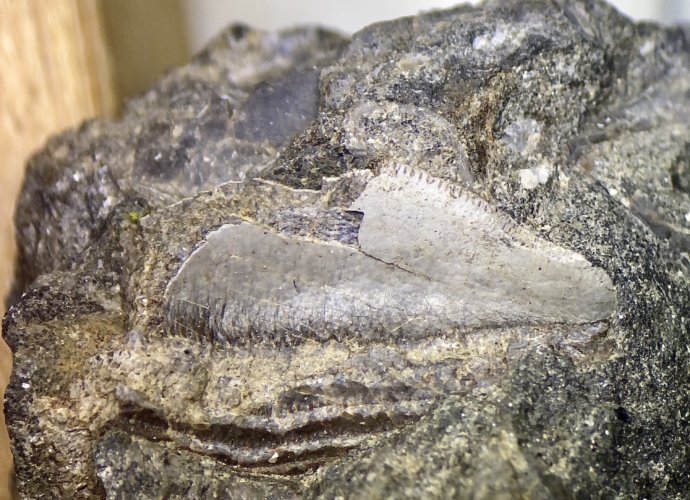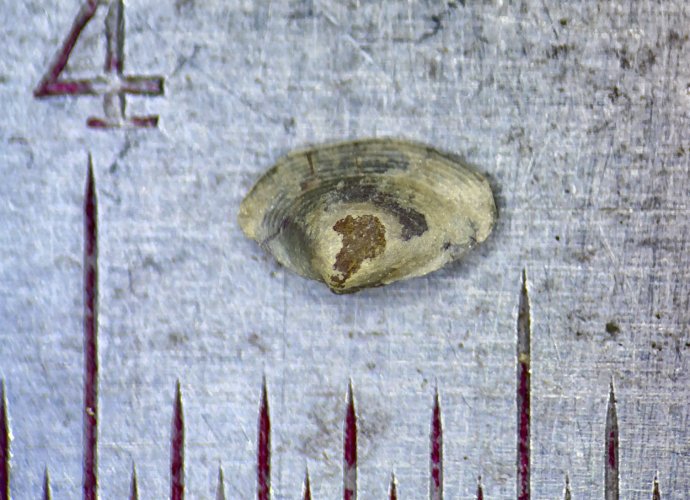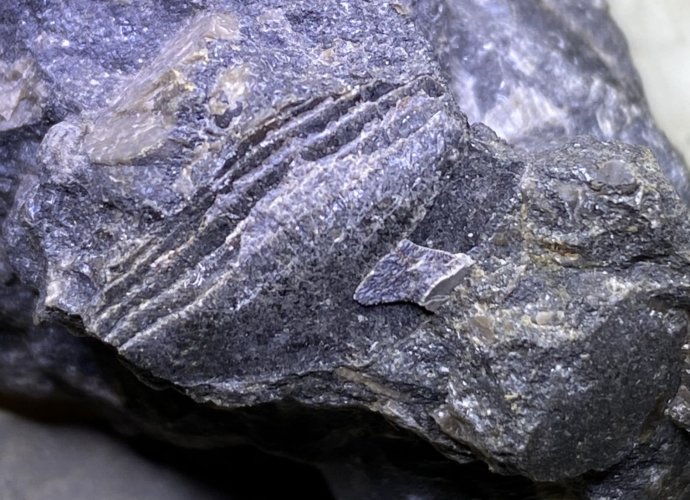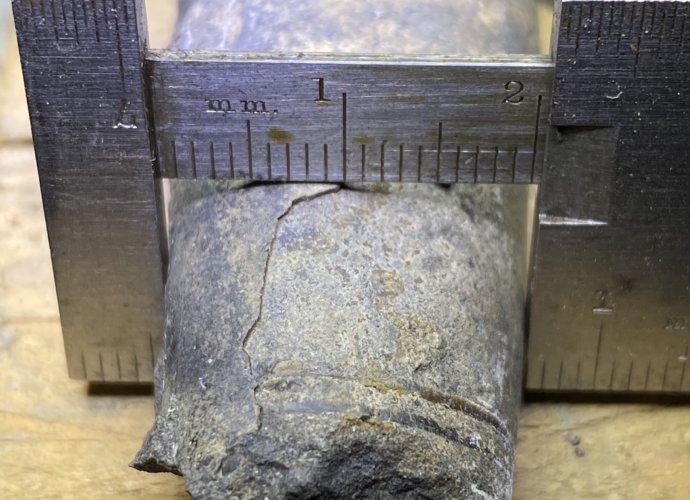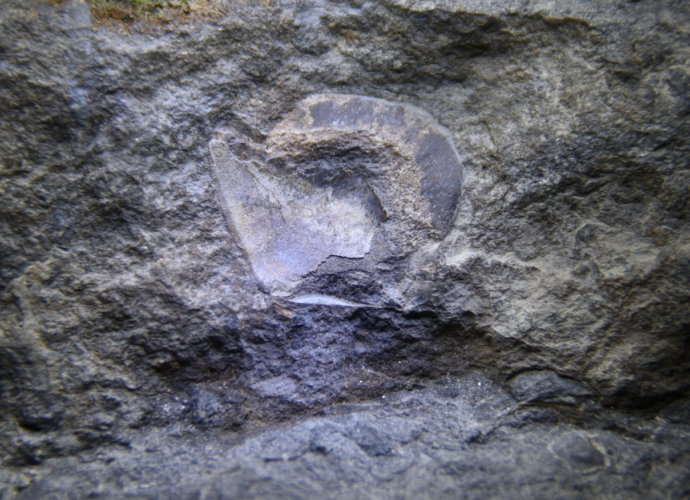Metacoceras VI
Limestone found in water usually yields better specimens. The water works its way into the cracks and crevices within the rock and specimens often come out easier compared to dry limestone. This specimen of Metacoceras is one of my best ones yet, coming out in once piece and showing aRead More →
Petalodus VI part B
In going back to the area where I typically find Petalodus teeth, I have several pieces of limestone separated out to look for. In searching, I found another tooth. However upon closer inspection I figured out that I had found the other side of tooth no. 6. Petalodus CatalogRead More →
Trilobite pygidium
I found this trilobite tail, also known as a pygidium, embedded in Brush Creek Limestone. By the Carboniferous, trilobites were on the decline, and evolution made them smaller. Only the order Proetida survived into the Carboniferous and died out at the end of the Permian. Two species represent the BrushRead More →
Edmondia sp.
The genus Edmondia was first described by de Koninck in 1841. The book is Description des animaux fossiles qui se trouvent dans le terrain carbonifére de Belgique, written in the French language. The genus occurs from 252.3 to 457.5 million years ago. It died out during the Permian–Triassic extinction event.Read More →
Petalodus VI
While sorting through the endless piles of fossil pieces I have set near the lab microscope, I found another piece of a Petalodus Tooth. This is the most incomplete of the teeth I’ve found to date, with only a microscopic tooth chip left behind. However, this helps with microscopic viewsRead More →
Metacoceras V
This speicmen is one of the best of the genus Metacoceras that I currently have. Metacoceras is one of the two most common species of cephalopod found in the Brush Creek Limestone. I have difficulty assigning a species. Even in the Treatise on Invertebrate Paleontology, there is a belief thatRead More →
Mooreoceras or Pseudorthoceras body chamber
I often find the body chambers of these cephalopods embedded in limestone. They come out as one piece but rarely are attached to the body. A specimen I freed today had two suture lines on it. Having a collapsed area on the chamber is another common feature, one that leavesRead More →
Large Cephalopod Body Chamber
A crescent shell indention showed up on the flat top of a piece of limestone. I thought maybe a large clam shell, but at this point I should know better. I hammered the rock for a while, thinking that maybe a piece would break off and reveal part of theRead More →
Petalodus Ohioensis Shark Tooth V
My first Petalodus ohioensis Shark Tooth of 2020 is my fifth overall. This specimen is the first with a three dimensional root. I keep a ready supply of limestone boulders near the lab in which I can search through the matrix. This boulder perhaps came from the same general areaRead More →


